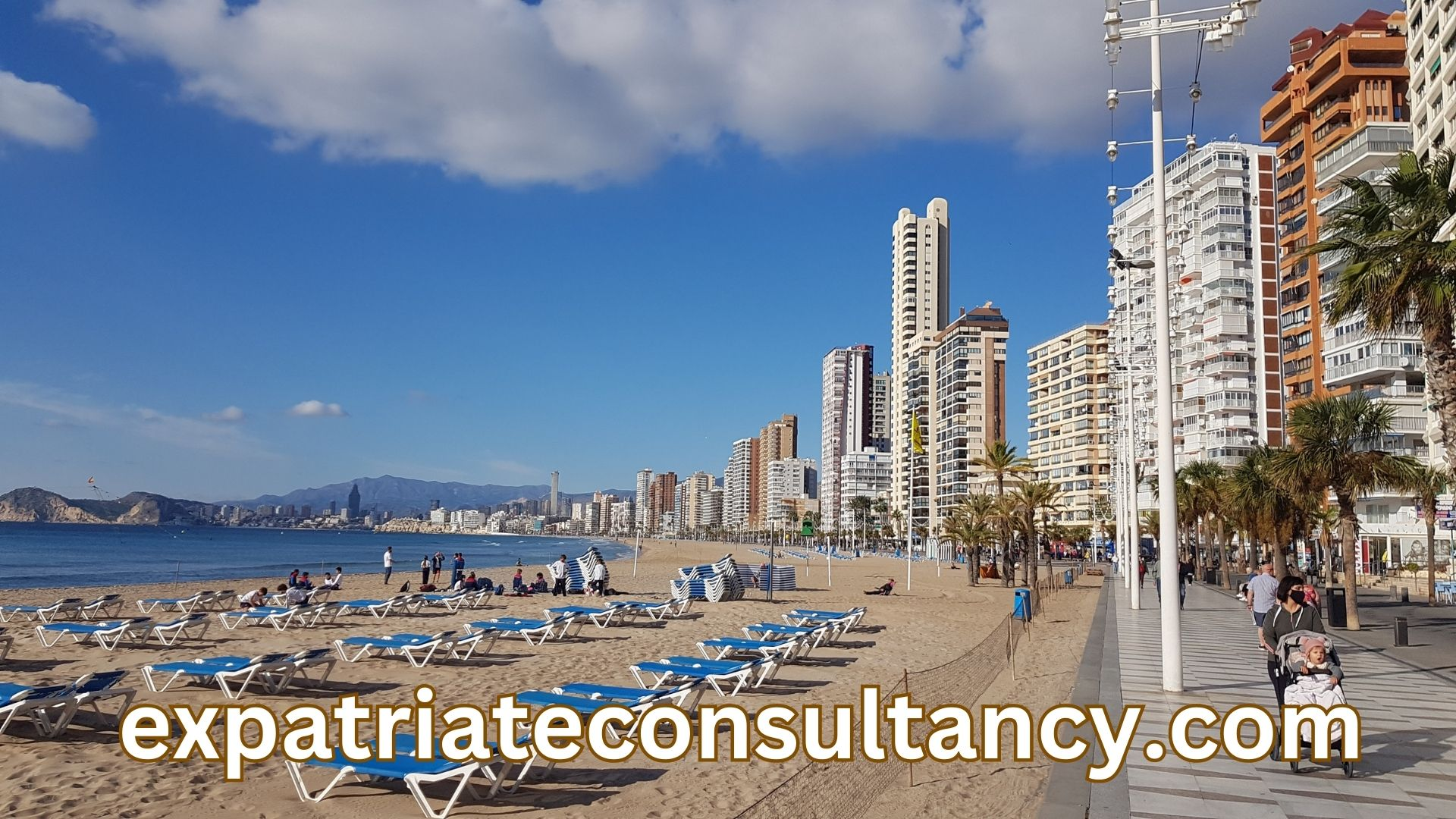Discover The Best Places to Retire in Spain (and Why Madrid is Not in The Top 10)
If you have already read any of my other articles about retirement abroad, you can jump straight to the first subtitle (Why are we writing about retiring in Spain?). If not, keep reading from the beginning to get some context about the best places to retire in Spain.
My company helps expats. Many of these people know what they want and just need help. What about retiring in X? What’s your opinion? they ask me.
Often I don’t know what to say. I tell my team to research the destination and write a detailed report so I can give our customers the information they need.
Not surprisingly, most of the destinations are warm places with idyllic beaches. Below is the resumed version of some reports we did, available for free for you:
- The Favorite Country for Americans to Retire (By Far) and Why So Many Do So
- The Insane Economics Behind the Idea of Retirement in Jamaica
- The Dreamy Destination That’s 50% Cheaper to Live In than Spain
- Why Did Over 29,000 Americans Choose Italy to Retire To?
- Pros & Cons of Retiring in a Place Where Days Can Last for 19 Hours
- How a Central-American Country Safer Than Delaware Became Popular Among Pensioners
- Retirees Choose This Country Due to Low Costs and Simple Pleasures… But Is It Safe?
- The Fascination of Retirees and Digital Nomads With This Caribbean Destination
- Why Did 7539 American Pensioners (And Lewis Hamilton) Move to This Tiny Country?
Ps: Check also our Youtube Channel.
Why are we writing about retiring in Spain?
As we said, our team wrote about a myriad of countries that are among the favorite places for pensioners, remote workers, and digital nomads.
There is a certain country that we wrote a few times about on our website: Spain.
It figured in multiple articles and ranks we made (more about these ranks below) because the demand for people interested in moving to Spain is massive.
But we never wrote about where to live in Spain, especially if you are a pensioner.
Until now…
Before jumping on the best places to retire in Spain, let’s understand the criteria used.
The Criteria to Define the 10 Best Places to Retire in Spain
While some aspects of the decision to move somewhere are indeed subjective, we specified a set of objective indicators and data to select the best places to retire in Spain.
Some other aspects, like the bureaucracy of moving to some places, we decided to leave out. The reason is that they would differ drastically from reader to reader. For example, if you are an American, moving to Valencia demands a few more bureaucratic steps (but it is still doable) than if you are German.
Hospital beds per 1000 inhabitants.
This may not be that important if you are part of the FIRE movement, but if we are talking about the traditional idea of retirement (when we are already at a certain age), good healthcare is necessary because people get sicker as they get older.
While this is not always the case, a city with few hospital beds per 1000 people may have an overburdened healthcare system. This can delay medical procedures and make specialized care harder to get. However, a city with many hospital beds per 1000 people often will have a decent healthcare system.
The source for this data is the Ministerio de Sanidad(Health Ministry of Spain).
The income per capita.
A higher income per capita means that the city or region has a higher average income, which typically leads to a higher standard of living, better infrastructure, and access to quality healthcare facilities (since these areas attract better doctors, clinics, and other infrastructure investments).
The data used is from the INE (Instituto Nacional de Estadística).
The Human Development Index (HDI)
The “human development index” (HDI) is a composite indicator that goes from 0 to 1. It takes into account factors such as life expectancy, education, and income to provide an overall measure of human development in a certain place.
The HDI is an important indicator when deciding a place for retirement because it provides insight into the overall quality of life in the area.
To put it into perspective, Norway has an HDI of 0.861, while Pakistan has an HDI of 0.544.
The Regional HDI of Spain is calculated by the Instituto Nacional de Estadística or compiled by the GlobalDataLab.
Cost of living per couple and to rent/purchase an apartment in the city center.
This is self-explanatory. If someone is retiring abroad, he/she wants to make the best of her buck.
When we are living on a stable pension from abroad, we look for a place where we can have a good quality of life for the lowest prices.
For these indicators, we used data from Numbeo and Expatistan.
Disclaimer: This indicator uses 2021 data. Since 2022 and 2023 had high inflation, values may be higher now, but the difference between cities (what matters for a comparison) remains.
The average temperature in January
January is the coldest month of the year in the northern hemisphere, and this is also valid for Spain.
Older people are especially affected by cold, so living in a place where negative temperatures are rare can boost immensely their quality of life. Some of the health conditions that are triggered or worsened by colder temperatures are:
- Arthritis: Cold weather can cause joint pain, stiffness, and swelling in people with arthritis. This is because cold temperatures can cause the tissues around the joints to contract, leading to increased pressure on the joints.
- Influenza and other respiratory infections: Cold weather can weaken the immune system, making older adults more susceptible to respiratory infections like the flu, pneumonia, and bronchitis.
- Heart attacks and strokes: Cold temperatures can cause blood vessels to constrict, leading to an increased risk of heart attacks and strokes in older adults.
- Seasonal affective disorder (SAD): SAD is a type of depression that occurs during the winter months, and it can affect older adults as well.
The 11 cities we selected as the best places to retire in Spain are ranked below based on their average temperatures in January, from warmest to coldest.
To put into perspective, the average temperature where I live (Poland) is 1.5 negative in January.
- Tenerife – 20°C
- Malaga – 14°C
- Costa del Sol – 14°C
- Alicante – 13°C
- Valencia – 12°C
- Costa de Azahar – 11°C
- Mallorca – 10°C
- Bilbao – 8°C
- Madrid – 7°C
- San Sebastian – 7°C
The average maximum temperature in July
While warm weather help with health conditions like Arthritis, excessively high temperatures can also present a risk for older people.
This is especially true when we get close to or above 40 degrees Celsius. I lived for some years in Qatar and high temperatures were one of the major risks for construction workers–mostly young and healthy. For seniors, it is even more dangerous.
That is why we filtered out any city that has an average maximum temperature in July (summer peak) above 32 degrees celsius. This resulted in the removal of cities like Seville (35.5°C of average max. temperature in July) and Córdoba, which has an incredible 36.5°C of average max. temperature in July and many days going above 40°C.
Below is the July average maximum temperature of our selected cities, from highest to lowest.
- Costa del Sol – 31°C
- Malaga – 30°C
- Alicante – 30°C
- Mallorca – 30°C
- Valencia – 29°C
- Costa de Azahar – 29°C
- Tenerife – 28°C
- Madrid – 28°C
- San Sebastian – 23°C
- Bilbao – 23°C
Now that all the criteria used are clear, time to go for our list.

The Best Places to Retire in Spain (and Why Madrid Has No Spot in the Top10)
Madrid: good quality of life for pensioners…. but for a high cost.
- Population: 3,334,730
- Hospital beds per 1000 inhabitants: 1.8 per 1,000 inhabitants
- Income per capita: €34,821
- HDI: 0.940 (2021)
- Cost of living for a couple: €2,506.94 per month
- Average maximum temperature in July: 28°C
- Average temperature in January: 7°C
- Cost of renting a one-bedroom apartment in the city center: €971.43 per month.

We were not supposed to put Madrid, the largest Spanish city, on this list of the best places to retire.
However, we inserted it for a few reasons.
The first of them is that there are indeed some pros to retire in the spanish capital.
Pros like the ample offer of high-quality major hospitals, entertainment and cultural options like science and art museums, an international airport that connects you to the entire world, excellent transport links by rail, and all the modern conveniences that a 3-million-people city can offer.
Madrid also has plenty of green spaces (they represent almost 16% of the city) and fresh food is available in the daily central market. In terms of violence, Madrid is a very safe city too.
The second reason we put Madrid in this ranking is that indeed a lot of people (including over 6 thousand other British citizens and expats) choose this city to live in.
But what are the cons of living in one of the largest European cities?
First and foremost, Madrid is expensive (the same is valid for another city we didn’t put in this list, Barcelona). Both the capital and surroundings are ery expensive when compared to many of the cities mentioned here.
If you are retiring abroad, you want to be cost-effective, and compared to other Spanish cities, Madrid is not. Another reason we didn’t put Madrid in the Top 10 is that it can get cold in the winter since the city is located at 657 meters of altitude. The third reason is that it is a 3-million-people metropolis, and therefore, it can get noisy, polluted, and complicated.
But, as we said, it has an excellent healthcare system and great infrastructure.
Read also: Find out where to travel in Europe each month of the year.
Mallorca
- Population: 896,038
- Hospital beds per 1,000 inhabitants: 1.9 (Balearic Islands region)
- Income per capita: €24,866(Balearic Islands region)
- HDI: 0.876 (Balearic Islands region)
- Average cost of living for a couple: €2,238.15
- Average max. temperature in July: 26°C
- Average temperature in January: 10°C
- Cost of renting a 1-bedroom apartment in city center: €825

Pros of retiring in Mallorca
- Warm and sunny climate all year round.
- The Balearic Islands have a good healthcare infrastructure, with 1.9 hospital beds per 1000 inhabitants
- Many opportunities for outdoor activities and an invitation to live the beach life.
- Due to the touristy nature of the place, it has good airline connectivity.
Cons of retiring in Mallorca
Nearly all the cons of Mallorca are related to the fact that it is one of the most popular tourist destinations in Spain.
- High cost of living, especially in peak season.
- During the summer months, the place can get really crowded.
- It can be noisy close to the most touristic spots and where there is a large concentration of hotels.
- Overcrowding and traffic congestion in certain areas due to tourism.
Bilbao: One of the best large cities to retire in Spain
- Population: 345,141
- Hospital beds per 1,000 inhabitants: 2.8 (Basque Country region)
- Income per capita: €32,925 (Basque Country region)
- HDI: 0.932 (Basque Country region)
- Average cost of living for a couple: €2,289.22
- Average max. temperature in July: 23°C
- Average temperature in January: 8°C
- Cost of renting a 1-bedroom apartment in city center: €750

Pros of retiring in Bilbao
- High HDI (Human Development Index) of 0.932, which is one of the highest in Spain
- Well-developed economically, with plenty of job opportunities for those who want to work in retirement
- Good public transportation system, making it easy to get around the city and beyond.
Cons of retiring in Bilbao
- The language barrier, as Basque is the lingua franca in the region and many locals prefer it instead Spanish.
- Relatively Cold weather, as temperatures can drop lower than in other parts of Spain, especially in the winter
- High cost of living, as Bilbao is one of the most expensive cities in Spain
- Air pollution can be an issue in some areas of the city
- The city may feel crowded and busy, especially during peak tourist season.
If someone prefers a smaller, and fancier alternative for retirement in the Basque region, there is also a city that is worldwide famous for its high cuisine and scenic views: San Sebastián.

San Sebastián: The Fancier, Smaller Alternative in the Basque Country
San Sebastian is situated on the coast of the Golfo de Vizcaya (Bay of Biscay), making it a great location for retirees who enjoy the beach and water activities (although Spain’s north Atlantic coast is much colder than the Mediterranean side). Bilbao, on the other hand, is not directly on the coast, although it is relatively close to some beaches.
San Sebastian also enjoys a milder climate than Bilbao, with average temperatures being a bit warmer and more comfortable throughout the year.
Finally, San Sebastian is a smaller city than Bilbao, with a more laid-back pace of city life. This can be appealing to retirees who prefer a more relaxed lifestyle, away from the hustle and bustle of a larger city.
- Population: 186,000
- Average cost of living for a couple: €2,400-€2,700/month
- Average max. temperature in July: 23°C
- Average temperature in January: 7°C
- Cost of renting a one-bedroom apartment in the city center: €1,000-€1,400/month
Tenerife & Canary Islands: the best place to live in Spain if you are suffering from arthritis
- Population: 917,841
- Number of hospital beds per 1000 inhabitants: 2 beds per 1,000 inhabitants (Canary Islands region)
- The income per capita: €18,990 (Canary Islands region)
- HDI: 0.902 (Canary Islands region)
- Average cost of living for a couple: €1,200 – €1,800 per month
- Average max. temperature in July: 28°C
- Average temperature in January: 20°C
- Cost of renting a one-bedroom apartment in the city center: €500 – €800 per month

Living in Tenerife and the Canary Islands as an expatriate retiree can be a mixed experience. While the islands offer a pleasant climate, stunning landscapes, and a relaxed way of life, they also have their challenges.
Expats should be prepared for a slower pace of life, and some areas can feel quite touristy. Additionally, the islands’ remote location can make it difficult to access some goods and services, and the cost of living can be high in certain areas during the high season.
Pros of Retiring in Tenerife and the Canary Islands
- Mild winter weather (one could even argue if winter exists there at all) – Tenerife has one of the warmest winters among European cities, making it the best place to retire if you suffer from arthritis.
- Decent infrastructure – The islands have a modern infrastructure befitting of a place with almost 1 million residents.
- Relatively affordable cost of living – Compared to the Islands in the Mediterranean, the Canary Islands (which are located in the Atlantic Ocean) offer a more affordable cost of living.
Cons of retiring in The Canary Islands
- Things run slower there – The islands’ relaxed way of life can be frustrating for those used to a faster pace.
- It can get touristy – Some parts of the islands can feel overrun by tourists, especially during peak season.
- Limited access to goods and services – The islands’ remote location can make it difficult to access certain goods and services.
- High cost of living in some areas – While the cost of living can be relatively affordable, certain areas can be quite expensive (general rule of thumb: the closer to popular beaches, the more expensive it gets).
Málaga – Low Living Costs and Good Connectivity
- Population: 578,460
- Hospital beds per 1000 inhabitants: 1.8 (Andalusian region)
- Income per capita: €20,321
- HDI: 0.860
- Average cost of living for a couple: €1,800-€2,200/month
- Average max. temperature in July: 28°C
- Average temperature in January: 12°C
- Cost of renting a one-bedroom apartment in the city center: €700-€1,100/month

Málaga, located in the autonomous community of Andalusia, is home to a large and welcoming expat community. Multiple retirees from all over Europe chose to make their home in this part of Spain.
The city also boasts excellent airline connectivity to other countries and parts of Europe, making it easy for retirees to travel and stay connected with loved ones. However, as with any location, there are also potential downsides to consider.
Pros of living in Málaga
- Low cost of living
- Good healthcare infrastructure with 1.8 hospital beds per 1000 inhabitants
- Considerable expat community
- Excellent airline connectivity to other European countries.
Cons of retirement in Malaga City
- Andalusia is one of the least developed regions in Spain. The unemployment rate is relatively high, which creates some other problems that can affect retirees.
- Hot summers can be uncomfortable for some
- High levels of tourism during the summer months can make the city feel crowded
- Andalusian bureaucracy can be frustrating and time-consuming
Only 81 kilometers from Málaga, in southern Spain, is a little region that is extremely attractive to pensioners that are beach lovers: Costal del Sol.
Costa del Sol: One of the best places to retire in Spain by the sea
- Average cost of living for a couple: €1,700-€2,000/month
- Average max temperature in July: 31°C
- Average temperature in January: 14°C
- Cost of renting a one-bedroom apartment in the city center: €650-€1,100/month
Living in the Costa del Sol as an expatriate pensioner can have its ups and downs. While the climate and relaxed lifestyle can be appealing, the region can also be quite crowded and expensive in certain areas.
Three of the favorite places for expatriates in the region are Marbella, Benalmadena, and Fuengirola.
Marbella is known for its upscale amenities and is a popular destination for wealthy retirees. The city offers high-end shopping, fine dining, and world-class golf courses. The cost of living can be quite high there.
Benalmadena is located between Malaga and Marbella and offers a more affordable option for expatriate pensioners, and Fuengirola is just 25 minutes from Malaga airport. The town has a long promenade, and beautiful beaches, and the cost of living in Fuengirola can be quite reasonable, making it an attractive option.
The Costa del Azahar: A Forbes-selected Spot 100km Far from Valencia
- Population: 406,703
- Hospital beds per 1000 inhabitants: 2.1 (Regional data)
- Income per capita: €22,289 (Regional data)
- Average cost of living for a couple: €1,300-€1,600/month
- Average max. temperature in July: 29°C
- Average temperature in January: 11°C
The region is known as Costa del Azahar is located on the eastern coast of Spain, and has a relaxed lifestyle with a warm Mediterranean climate.
While not as well-known as the Costa del Sol or the Costa Blanca, it is becoming an increasingly popular destination for retirees seeking a quieter pace of life. A few years ago, the fame of the place was boosted when the magazine Forbes mentioned it among the best places to retire.
Popular areas for expats include Peñiscola, Benicassim, and Castellón, de la Plana.
Peñiscola is a beach town known for its golden sand beaches and medieval castle, Benicassim is a popular resort town, and Castellón de la Plana is a larger city (not in the seaside, but not far either) with a historic center and wide variety of amenities.
Alicante – One of the lowest costs of living.
Due to its low cost of living and a good offer of services, Alicante is also popular among Spanish retirees.
- Population: 334,329
- Hospital beds per 1000 inhabitants: 2.1 per 1,000 inhabitants (regional data)
- Income per capita: €22,289 (regional data)
- HDI: 0.889
- Cost of living for a couple: €1,791.57 per month.
- Average max temperature in July: 30°C
- Average temperature in January: 13°C
- Cost of renting a one-bedroom apartment in the city center: €564.29 per month.

Pros of Retiring in Alicante
- Low cost of living, making it an affordable option.
- Mild winters, making it an ideal location for those who want to retire overseas but have a low tolerance to cold weather.
- Gorgeous beaches and outdoor activities such as hiking and golfing, make it easy to enjoy an active lifestyle.
Cons of Retirement in Alicante
- During the summer months sometimes temperatures go over 38°C, which can be uncomfortable for some retirees.
- Alicante is near some very popular vacation spots like Benidorm. So during the summer, there is a high population density and a large number of tourists, which can lead to crowded streets and difficulty finding peaceful places to relax.
- For services not related to tourism, there is limited availability of English-speaking options, which can make it challenging for retirees who do not speak Spanish (that is why you should learn Spanish if you are considering a move).
- Occasional water shortages due to the region’s dry climate, which can affect the availability of water for household use.
Talking about Alicante, very close to there is one of the popular places for English-speaking expats that choose Spain to live: Costa Blanca.
Costa Blanca: One of the trendiest retirement spots in Spain
Costa Blanca, on Spain’s southeast coast, has beautiful white sandy beaches, charming coastal towns, and plenty of sunshine. Many British, German, Dutch, and Scandinavian retirees live in this part of Spain, and often locals speak English as a second language.
The cost of living in the Costa Blanca can vary depending on the specific location within the region. For example, one of the most expensive places is Benidorm, which is also very touristy. In general, the larger coastal cities and tourist areas may have a higher cost of living compared to smaller towns and inland areas.
Cons of retiring in the Costa Blanca
Two drawbacks of living in Costa Blanca are that crowded beaches and tourist spots, especially in summer, make it hard to relax, and some areas have limited public transportation, making it difficult for retirees without cars.
Valencia – Likely the Best Place to Retire not only in Spain but Entire of Europe
- Population: 794,288
- Number of hospital beds per 1000 inhabitants: 2.1 (Comunidad Valenciana)
- Income per capita: €22,289 (Comunidad Valenciana)
- HDI: 0.944 (Comunidad Valenciana)
- Average cost of living for a couple: €1,500 – €2,000 per month
- Average max. temperature in July: 29°C
- Average temperature in January: 12°C
- Cost of renting a one-bedroom apartment in the city center: €650 – €900 per month

If you already saw our ranking of the best cities to retire in Europe, you know that Valencia has far more pros than cons.
Spain’s third largest city is extremely safe (it has a homicide rate of 0.6 murders per 100K residents and lower criminality than the more hyped Barcelona for example).
The living costs in the city are remarkably low when compared to other trendy places in Europe. According to Vivre Valencia, anyone can easily find a house with a swimming pool close to the coast for less than a third of the price of the French Riviera.
But the attractiveness of a city that is considered by many the ideal retirement destination also raised some issues. Expats should be prepared when trying to find a place to live since competition for housing can be intense, and in some areas, prices increased considerably.
Pros of Retirement in Valencia
- Valencia is one of the most popular destinations for expatriates in Spain. Foreigners represent almost 13% of the city population, and there are many events for this public.
- There is a large English speaking community in the city.
- High HDI – The city has a high Human Development Index (0.944), reflecting a high quality of life.
- High-quality healthcare infrastructure
- Airline and rail connections to other parts of Europe.
- With close to 800k residents, Valencia is neither too large nor too small for most people.
Cons of Retirement in Valencia
- Competition for housing can be fierce, particularly in popular areas.
- Increasingly crowded – As Valencia became more popular, the city can feel crowded, particularly during peak tourist season.
Conclusion: The Best Places to Retire in Spain
Taking into consideration factors like the Human Development Index (HDI), the number of hospital beds per 1000 inhabitants, the average cost of living for a couple, the average cost of housing, and temperatures in July and January, we ranked the best places to retire in Spain:
11 – Madrid
10 – Mallorca
8 – Bilbao and San Sebastián
7 – The Canary Islands
4 – Málaga, Costa del Sol and Costa de Azahar
2 – Alicante and Costa Blanca
1 – Valencia – The Best Place to Retire in Spain
If you enjoyed this article about the best places to retire in Spain, here are a few other reading suggestions for you:
The 7 Countries With The Worst Work-Life Balance in The OECD
The Best Cities for Remote Workers in 2023
Levi Borba is the founder of The Expatriate Consultancy, creator of the channel The Expat, and best-selling author. Some of the links in this article may be affiliate links, meaning that the author will have a commission for any transactions.




